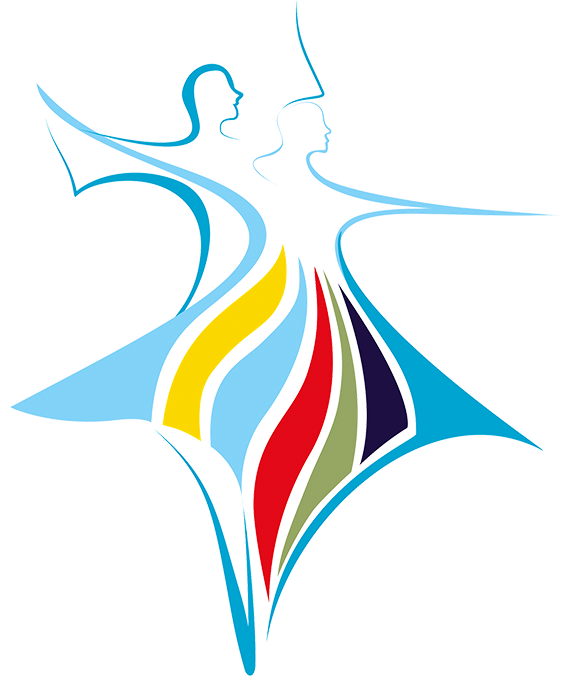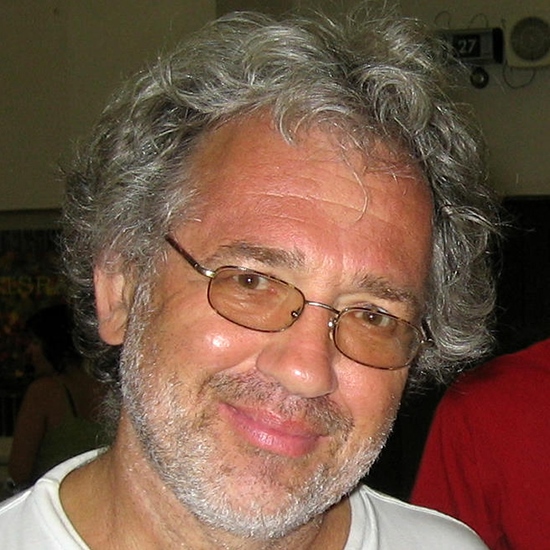- Home
- Rokdim-Nirkoda 118
- Israeli Folk Dancing in Austria
Israeli Folk Dancing in Austria
On the development of Israeli folk dances in Austria
Taking into account the loss of the German-speaking regions of South Tyrol (Italy) and Sudetenland (Czechoslovakia) as well as the gain of Burgenland by referendum (Hungary), Austria only existed within its current borders since 1921. It was granted independence by the victorious powers of the First World War practically against the will of the population. The name “Ostarrichi” for today’s German “Österreich” was first recorded in 996; while the word “Austria” is the older Latin name for this Alpine region. At 83,883 km² (or 32,387.5 m²), Austria’s area is about a fifth that of California. Although German is the official language, Hungarian, Slovenian, and Croatian are also permitted in a few isolated border communities. The republic is divided into nine federal states, with Vienna as one of them having the largest share of the population with over two million inhabitants and just under 23% of Austria’s total population (or almost a quarter of 9.2 million). After Vienna, Austria’s largest cities are Graz, Linz, Salzburg, and Innsbruck.
The evidence of a Jewish presence in Vienna dates back to the 12th century. King Albert V ordered the extermination of Vienna’s Jews through expulsion and murder between 1420 and 1421; hundreds committed collective suicide. The last were eventually burned alive. A second expulsion took place in 1669/1670, until in 1683, during the Turkish siege of Vienna by the Ottomans, the royal family became heavily dependent on funds from Jewish bankers like Samuel Oppenheimer and Samson Wertheimer. With the “Edict of Tolerance” of 1782, the Jews of Vienna and Lower Austria were granted access to all universities and extensive freedom of trade. Finally, the “December Constitution” of 1867 granted Jews unrestricted residence and religious practice throughout Austria for the first time in its history.
In 1869, approximately 40,000 Jews constituted 6.6% of Vienna’s population. In 1885, the “Austrian-Israelite Union” was founded, which also published the weekly magazine “Die Wahrheit” (“The Truth”). Politically, the “National Jewish Party” (1882-1938, known as the “Jewish List” from 1930 onward) had little success. Around 1900, Austria’s capital was one of the most important centers of Jewish culture in Europe. Today, only around 8,200 citizens are registered as Jews in Austria (although including unregistered Jews, the number could be twice as high), about 85% of whom live in Vienna.
It is no longer possible to determine exactly since when Israeli folk dances first existed in Austria. Beyond Austria’s borders, it became first known through a listing of foreign dance events in Rokdim 10 (September 1991, p. 27), which mentioned a certain “Erwen Renart” as contact at “Praterstraße 25A.”. This name last appeared in Rokdim 30 (March 1995, p. 31), followed by Miriam Eibner with the same address. Erwen Renart could not be identified by anyone, though, and thus he remained largely unknown. However, with some research, a certain Erwin Rennert (1926-2009) was finally located, who published his biography in two read-worthy books, namely “Der Welt in die Quere” (Sideways into this World) and “Fast schon Amerikaner” (Almost American), both unfortunately only published in German. After having contacted the Viennese JCC, they informed me that there must be another person, albeit with the same name. As the now-real Erwin Rennert explained to me in a phone call, he was unaware that his name had appeared in an Israeli periodical – he himself had never initiated anything in this regard. However, Rennert added, that he is indeed related to the other, the first Erwin Rennert.
Now talking about the real Erwin Rennert, he first encountered Israeli folk dance in the mid-1980s during a year-long stay in a kibbutz, although there must have already existed internal courses offered in Vienna through the local “Hashomer Hatzair” in the years before. Back in Vienna, he founded his own dance circle around 1988 with approximately 8-12 more or less regular participants. The location, Praterstraße 25 A, was a kind of cultural center of the SPÖ, the “Socialist Party of Austria” (from 1991 “Social Democratic”), one of the country’s three leading parties. Rennert mentioned the visit of several Israeli choreographers around 1990. However, how this was organized could no longer be determined. Rennert was not able to provide any more specific information, stating that the whole thing had happened far too long ago. The only thing he remembered was the name of Avi Amsalem.
A certain movement occurred in Austria’s Israeli folk dance scene around 1991-1993 after Matti Goldschmidt held his first weekend workshops in this country, first in Hallein (1991 and 1992) and the following year in Salzburg (1993) under the direction of Dr. Marianne Ferstl. He was soon invited for further workshops in Vienna organized by Brigitte (Gitti) Lanik and Martin Pokorny, who were originally more dedicated to international folk dance. The general interest among folk dancers in Israeli folk dance became so intense that, due to strong demand, two workshops were held in Vienna in 1993. A large number of annual workshops led by Matti Goldschmidt followed in other parts of Austria, such as in Graz (1994-2007, primarily organized by Franziska Perhab), Salzburg (1993-2005), Linz (1994-1995), and Klagenfurt (1996-1999, Bernhard Hofer).
According to Ben Dagan, head of communications for the Israelitische Kultusgemeinde (IKG – “Israelite Community”) in Vienna, at the beginning of 2025, the JCC itself had never offered Israeli folk dance, in contrast to similar institutions in Germany such as in Munich, Frankfurt or Berlin. The closest thing to Israeli folk dance events organized by the IKG are performances at annual street festivals. The name of Lisa Erber was mentioned as a direct contact. It is worthwhile to mention that the motto of the IKG‘s cultural department is otherwise described as “lively, diverse and unifying”. The following lists people in alphabetical order who have been particularly involved in the field of Israeli folk dance in Austria. For the sake of completeness, Piroska “Piri” Selemen, who led her own regular dance group for several years, should be briefly mentioned. In the same way to be mentioned is Ada Sedlak, with a PhD in Computer Science, with her dance group “Hora Belibenu” (“Hora in our Hearts”) in the years 2014-2020, who already danced in her earlier years (1966-1969) at the Vienna section of “Hashomer Hatzair” in the Storchengasse under the youth leader Yoram Roth. Also worthy of mention are Elisabeth Marothy and Andrea Lukacs, who maintained a dance group in Innsbruck for many years.
As is the case not only in Israel and other countries, the field of “Israeli folk dance” in Vienna is complex and characterized by personalities of varying temperaments, so that minor disagreements, splits, and occasionally even reunions within dance circles repeatedly occur. The exhuberance of the period 1993-2010 subsided over the years, and practically all of the remaining groups lacked new, younger participants — surely a worldwide phenomenon in the field of folk dance. Israel’s precarious political situation since October 7, 2023, and public opinion surrounding it, certainly also have an impact on cultural issues, insofar as they affect not only Israeli but also local Jewish interests. Vienna’s Jewish population today amounts to only 0.35%, while the Muslim population (citizens with Austrian citizenship) accounts for 11% (mainly of Turkish or Bosnian descent). Of all the names mentioned below in this article, essentially only Lisa Erber stayed active in the field of “Israeli folk dance” in Vienna. In contrast to South American countries, the USA, or even Australia, Austria’s folk dance clientele is predominantly non-Jewish, similar to that in Germany.
Natali Assa (Vienna/Wien) assa.natali@gmail.com
Actually, everything about Natali was already told in issue no. 107 of Rokdim-Nirkoda (p. 5). Born in Sofia, the capital of Bulgaria, she began teaching regularly in Vienna in 2013, then at the age of 18, at the Jewish sports club “Hakoah” which was founded in 1909. It worthwhile to note that its football (soccer) section won the Austrian championship in 1925. Her first class consisted of up to fifteen participants. This was followed in 2014 by a second class at the Jewish Institute for Adult Education (JIFE) founded in 1989.
With the onset of the pandemic (COVID-19) and after everything else came to a virtual standstill, she opened a Sunday course on the “Donauinsel” (Danube Island) in 2019 under her own direction and the motto “Dance with Nat!”, which typically attracted between twenty-five to thirty-five participants. Her preferred catchphrase was essentially “Jump like Meshugeh”, trying to attract younger participants into her dance circles. Natali’s stay in Vienna, and thus her dance activities there, ended in October 2020 with her move to Barcelona.
Miriam Eibner-Löwy (Vienna/Wien)
Miriam Eibner came to Vienna from Abtenau (Salzburg-Land) around 1990 to study musicology. After a year of ballroom dancing and with a constant lack of a dance partner, she switched to international folk dance, ultimately settling on Israeli folk dance in 1993 after her first workshop with Matti Goldschmidt. In 1995, she participated in the Israelisches Tanzhaus (ITH) third dance trip to Israel and attended several dance weekends in Munich as organized by the ITH, including guest instructors such as Mishael Barzilay, Moshe Eskayo, Sefi Aviv, Meir Shem Tov, and Avner Naim. Like many other dance enthusiasts from Europe, she also visited England for Maurice Stone‘s “Machol Europa”. She was soon commissioned by the JIFE to teach Israeli folk dance courses (1995-1997). Until recently, like Rennert she was unaware that her name was published in Rokdim’s list of foreign dance instructors (from issue 32, July 1995, p. 47). Due to professional developments, marriage, and pregnancy, she ended her dancing activities around 1999.
Lisa “Batya” Erber (Vienna/Wien) tirkedu@gmail.com
Lisa Erber, originally from Tulln (Lower Austria), is possibly the longest-standing Israeli folk dancer in Austria, as her dance career dates back to the dance circle led by Erwin Rennet as mentioned above. Attending various workshops in Munich and participating at Machol Europa in 1999 solidified her dance repertoire. Starting in 2020, she replaced Monika Macht as dance director in the dance group “Hava Nagila”. In 2022, she founded yet an additional dance group under the name of “Tirkedu“ (Dance!) which replaced “Hava Nagila”. They currently dance for three hours every Tuesday from 6:30 p.m. in a seminar center in the Second District (Vienna’s “Jewish district”), beginning with easier dances and later moving on to more advanced ones, albeit from the more modern and contemporary repertoire. The cost is €12 per participant. On Wednesdays, she leads courses with around fifteen participants at the JIFE, which also welcomes participants with no previous experience. The cost for one trimester (that is for fourteen sessions) is €104 (US $118 / ILS 430). Due to a lack of men, there are virtually no partner dances in either course. Currently, “Tirkedu“ has the only performance group in Vienna that contributes Israeli dances to public street festivals.
Naama Isabelle Fassbinder (Vienna/Wien) naama.fassbinder@gmx.net
Naama Isabelle Fassbinder is originally from Heidelberg (Germany) and began Israeli folk dancing in 1984, at the age of 16, under the direction of Zeev Heinrich. In 1991, she moved to Vienna. After failing to find a public dance group there, she decided to found one herself. In 1992, she was appointed course instructor at the Jewish Institute for Adult Education (JIFE), a position she held until 1995. She attended various workshops, including those with Matti Goldschmidt in Vienna and one in Munich with Moshe Eskayo in 1995. During this period, the performance group under her direction performed at various public events organized by the City of Vienna and the local JCC. In 1998, after another three years with her private dance circle, she and her dancers decided, for “reasons of age”, to switch from Israeli folk dancing to “Biodanza”, which had been originally developed in Chile.
Bernhard Hofer (Klagenfurt, Carinthia/Kärnten) bernhardhhofer@gmail.com
Bernhard Hofer began dancing at a young age, initially as the leader of a children’s group within the “Katholische Jungschar” (KJS), the children’s organization of the Catholic Church in Austria. In 1994, he joined a dance group founded by Jutta Trampitsch, featuring international folk dances. Together with her, in 1995 he participated in the Israelisches Tanzhaus’ third dance trip to Israel. The dances he learned there ultimately laid the foundation for shifting the focus of his and Tramptisch‘s dance repertoire to Israeli. In 1998, Bernhard took over the group, which from then on would essentially focus exclusively on Israeli folk dance. In Munich, he regularly attended workshops organized by the Tanzhaus, including those with Naftaly Kadosh, Tuvia Tishler, and Roni Siman Tov. In the aftermath of COVID-19 and the accompanying well-known restrictions, Bernhard finally disbanded the group in 2022 due to a lack of new participants.
Klaus Kerber (Reutte, Tyrol/Tirol) klaus.kerber@web.de
Klaus Kerber is not only a ballet dancer, but also a trained ballet teacher. He received his diploma in 1989 in Vienna from the “Austrian Society for Music Theater” under Professor Karol Toth. Part of his training was also character dance, whereby, according to Kerber’s words, character dances are understood to be folk dances created for ballet theater at a professional level. In Munich, Klaus founded a ballet school called “Viva la Danza”. Quite by chance, one of his young students at the time, namely Katharina Popp, once asked at the end of a lesson if she could perform an Israeli folk dance that she had learned in one of Matti Goldschmidt’s classes. For Klaus, it turned out not to be just this one dance. The use of Rokdim dance videos enabled the Tyrolean native to gradually expand his repertoire and for about five years he has been offering an Israeli Folk Dance Course every Monday at the adult education center in Reutte (Tyrol).
Monika Macht z“l (Vienna/Wien)
Monika Macht (1952-2023) first encountered Israeli folk dance well over thirty years ago: a workshop with Matti Goldschmidt in Graz in 1994, a weekend with Moshe Eskayo, a dance trip to Israel with the Israelisches Tanzhaus in 1995, and Machol Europa with Shlomo Maman and Moshiko Halevy in 1996 – these were the first and most important stops during her initial years. From 1998 until 2015, she led a dance group called “Hava Nagila” at the JIFE, and in the years that followed, she instructed at a studio called “Tanzstelle”, a Viennese “meeting place for dance and movement culture“. Most recently, her program consisted of two weekly dance evenings of three hours each (Saturdays and Mondays). The price per evening and per participant was €11 (US $12.50 / ILS 45). According to an excerpt from the official federal “Register of Associations”, the association she chaired, namely “Hava Nagila israelische Tänze Wien e.V.”, was founded as a registered charity in September 2018 (ZVR number 1550687066).
Starting in 1996, Monika Macht invited various choreographers from Israel to Vienna, who thus had the opportunity to visit Austria for the first time. The names included Sefi Aviv, Eran Bitton, Gadi Bitton, Yoram Sasson, and Rafi Ziv. In 2009, she organized a weekend camp in the south of the country called “Machol Austria“ in Velden at Wörtersee (Carinthia).
She performed annually at various street festivals with the dancers of her dance group. The highlight was the dance group’s performance in 2011 at the opening ceremony of the European Maccabi Games (choreography: Matti Goldschmidt) under the musical direction of Timna Brauer, daughter of the painter and singer Arik Brauer. Since 2006 she has been regularly accompanied by her granddaughter Melanie Fröhlich (cf. Rokdim-Nirkoda 107, p. 12), then only ten years old, and captured on video as a dance partner with Rafi Ziv in Munich in “Menagev Lach et Hadma’ot“ (Wiping Your Tears). You may see ten year old Melanie dancing together with Rafi Ziv from 2:08. Around 2020, Melanie moved to Salzburg for professional reasons and thus gave up her dance activities.
In April 2022, due to Monika’s already advanced illness, she ended her dance activities in Vienna in cooperation with Judith Weinmann-Stern with a weekend workshop with Dudu Barzilay.
Helmut Stolterfoht (Graz, Styria/Steiermark) hstolterfoht@yahoo.com
Over twenty years ago, Helmut Stolterfoht, originally from Stuttgart, Germany, founded a Sunday dance group specializing in Israeli folklore in Graz, Austria’s second-largest city with 303,000 inhabitants (and home to Arnold Schwarzenegger, former Governor of California from 2003 to 2011). After a brief hiatus and a break until 2014, Helmut dances — and this is remarkable for Austria — five times a week, Monday to Friday at lunchtime, at the “Tanzsportklub Eden” in the city center. Only on Thursday evenings do they meet in the (Catholic) parish of Graz-Ragnitz. Around seven dancers usually attend each of these meetings. They dance both older and newer dances, especially those with music that contains texts from the Bible or other religious sources. Partner dances are also done, as long as men occasionally join in. A fee of €5 (US $5.70 or ILS 20) is payable per participant and per meeting.
Veronika Wassermann (St. Pölten, Lower Austria/Niederösterreich)
Since 2011, Veronika has been leading classes in her private winter garden in Saint Pölten, the capital of Lower Austria, about 60 kilometers (around 39 miles) west of Vienna. The group consists of an average of ten people who meet every Monday for two hours. They intensively practice about five dances each evening. There is no participation fee for the classes.
At just 19 years old, Veronika was so inspired by “Od Lo Ahavti Dai“ (I Haven’t Loved Enough) that she subsequently created her own choreographies, based on basic Israeli steps, to music composed by her husband, Bertram. Naturally, those were based on well-known Israeli melodies. Her nine dances have since been published with dance descriptions on a CD and DVD under the title “The Dance Book of Baroness von Frech“.
Veronika is particularly enthusiastic about the joy and liveliness of Israeli folk dances; both of these characteristics are, according to her words, “usually quickly transferred to those present”. Their repertoire, which has now grown to twenty-four dances, includes titles such as “Dror Yikra” (He Shall Proclaim Freedom), “Al Kanfei Hakesef” (On Silver Wings), “Todah” (Thank You) and “Mechol Halahat” (the Flame Dance).









Comments
התראות